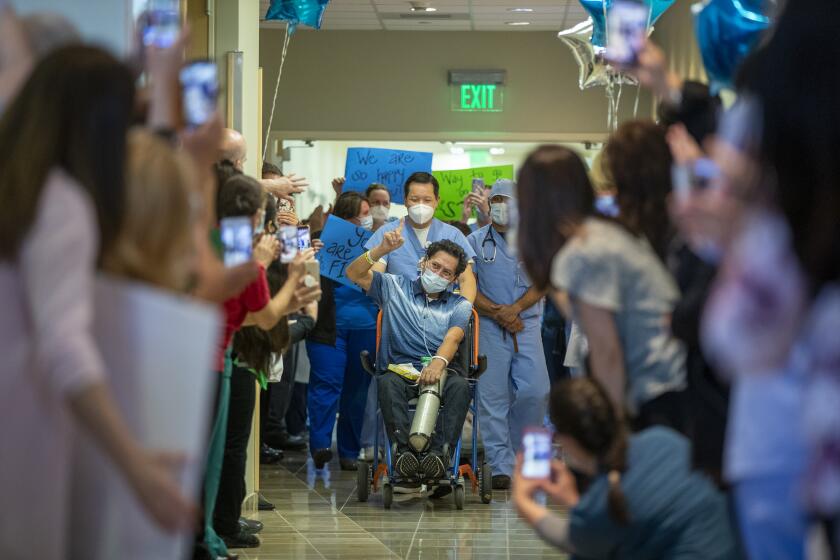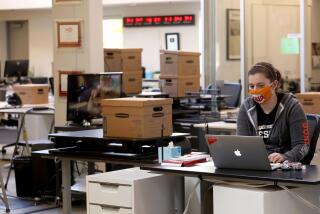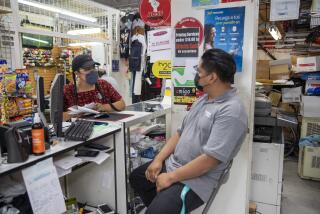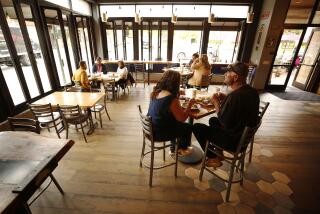This is California’s reopening plan for stores, offices, schools, sports, concerts, theaters

Gov. Gavin Newsom on Tuesday released a four-stage plan for reopening parts of the California economy after weeks of stay-at-home home rules that have been credited with slowing the spread of the coronavirus.
The phases are designed to slowly reopen the state while preventing new outbreaks that could lead to another shutdown. There are no timetables attached; rather, officials will use benchmarks around testing, hospitalizations and other factors.
These are some of the unusual new scenes across the Southland during the coronavirus outbreak.
Under the plan, some retail businesses, manufacturing, schools and open spaces could reopen first, with strict social distancing rules. Down the line, certain entertainment venues and religious institutions could reopen. Live sports, concerts and other crowded events would be the last to reopen under the plan.
Here’s a breakdown of that four-stage plan:
STAGE 1: Safety and preparedness
Goal: Making work as safe as possible for those on the front lines
This phase is now underway.
- Continue to build out testing and contact-tracing capabilities and hospital surge capacity.
- Continue to make workplaces as safe as possible for essential workers.
- Work on adaptations to the physical setting and workflow in hospitals and other settings.
- Build a safety net for essential workforce.
- Make PPE more widely available.
- Incorporate individual behavior changes.
- Prepare safety guidelines for an expanded force of front-line workers.
Stage 2: Lower-risk workplaces reopen
Goal: Creating opportunities for lower-risk sectors to make adaptations and reopen.
In this phase, modified school programs and child care reopen as well as the following sectors and spaces:
- Retail (with curbside pickup, for example)
- Manufacturing
- Offices (when teleworking is not possible)
- Additional public spaces
An expanded workforce safety net could mean:
- Wage replacement so workers can stay home when sick.
Adaptions for reopened schools and child-care facilities could mean:
- Summer programs and an earlier start to the next academic year, in July or August.
What’s needed to get from Stage 1 to Stage 2?
Government actions:
- Enacting policies that allow people to stay home when they’re sick.
- Providing guidance on how to reduce coronavirus risk.
Business actions:
- Provide wage replacement so workers can stay home when sick.
- Implement adaptations to lower-risk workplaces.
- Allow employees to continue to work from home when possible.
Individual actions:
- Use safety precautions, such as physical distancing and wearing masks.
- Avoid all nonessential travel.
- Support and care for people who are at high risk.
Key goals to hit before moving to Stage 2:
- Hospitalization and ICU trends are stable.
- Hospital surge capacity can meet demand.
- There’s sufficient PPE to meet demand.
- Testing capacity is sufficient to meet demand.
- There’s contact-tracing capacity statewide.
The transition to Stage 2 will occur through a statewide modification to the stay-at-home order.
Opportunity for regional variations
During Stage 2, counties may choose to relax stricter local orders at their own pace.
Following Stage 2, once a statewide COVID-19 surveillance system is made possible through testing, further regional variations could be supported.
The state will consult and collaborate closely with local governments.
Stage 3: Higher-risk workplaces reopen
Goal: Open higher-risk environments with adaptations and limits on the size of gatherings.
The following sectors reopen:
- Personal care (hair and nail salons, gyms)
- Entertainment venues (movie theaters, sports without live audiences)
- In-person religious services (churches, weddings)
Stage 4: Stay-at-home order ends
Goal: Reopen the highest-risk workplaces.
At this point, therapeutics will have been developed and other key goals met. These events and sites will then reopen:
- Concerts
- Convention centers
- Sports events with live audiences
More to Read
Start your day right
Sign up for Essential California for news, features and recommendations from the L.A. Times and beyond in your inbox six days a week.
You may occasionally receive promotional content from the Los Angeles Times.








